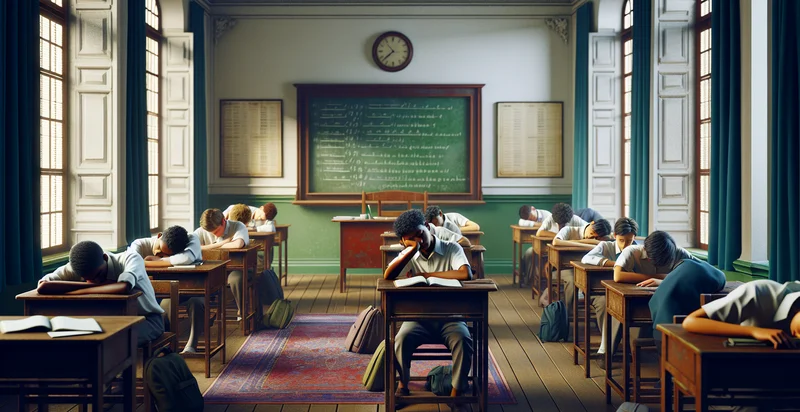Identify distracted students
using AI
Below is a free classifier to identify distracted students. Just upload your image, and our AI will predict if a student is distracted - in just seconds.

Contact us for API access
Or, use Nyckel to build highly-accurate custom classifiers in just minutes. No PhD required.
Get started
import nyckel
credentials = nyckel.Credentials("YOUR_CLIENT_ID", "YOUR_CLIENT_SECRET")
nyckel.invoke("student-distraction-identifier", "your_image_url", credentials)
fetch('https://www.nyckel.com/v1/functions/student-distraction-identifier/invoke', {
method: 'POST',
headers: {
'Authorization': 'Bearer ' + 'YOUR_BEARER_TOKEN',
'Content-Type': 'application/json',
},
body: JSON.stringify(
{"data": "your_image_url"}
)
})
.then(response => response.json())
.then(data => console.log(data));
curl -X POST \
-H "Content-Type: application/json" \
-H "Authorization: Bearer YOUR_BEARER_TOKEN" \
-d '{"data": "your_image_url"}' \
https://www.nyckel.com/v1/functions/student-distraction-identifier/invoke
How this classifier works
To start, upload your image. Our AI tool will then predict if a student is distracted.
This pretrained image model uses a Nyckel-created dataset and has 2 labels, including Focused and Distracted.
We'll also show a confidence score (the higher the number, the more confident the AI model is around if a student is distracted).
Whether you're just curious or building distracted students detection into your application, we hope our classifier proves helpful.
Related Classifiers
Need to identify distracted students at scale?
Get API or Zapier access to this classifier for free. It's perfect for:
- Classroom Engagement Monitoring: This use case focuses on analyzing students’ facial expressions and body language to identify periods of distraction during classroom sessions. Educators can receive real-time feedback and adjust their teaching strategies to enhance student engagement and minimize distractions.
- Online Learning Environment Evaluation: In virtual classrooms, the distraction identifier can analyze video feeds to detect whether students are focused or distracted. This information can help instructors identify trends in online learning distraction and adapt their content delivery methods accordingly.
- Educational Content Development: Content creators can leverage the distraction identifier to evaluate student reactions to educational materials. By understanding what content leads to higher rates of distraction, they can refine and develop more engaging and effective learning resources.
- Performance Analytics for Schools: Schools can implement this technology for broader student performance analytics, correlating distraction levels with academic outcomes. Administrators can focus on strategies and interventions to improve student concentration based on insights gained from distraction assessments.
- Smart Classroom Technology Integration: Integrating the distraction identifier into smart classroom technologies can create adaptive learning environments. For instance, when distractions are detected, the system could automatically adjust lighting, audio, or the teaching modality to recapture student attention.
- Parental Insights and Engagement: Schools can provide parents with insights into their child's engagement levels through the distraction identifier. This data gives parents the opportunity to understand their child's learning environment better and collaborate with educators to support their academic success.
- Behavioral Research Studies: Researchers studying educational psychology can use the distraction identifier to gather quantitative data on student behavior in various settings. This data can shed light on the factors contributing to distraction and help develop strategies to enhance focus and learning outcomes in educational environments.


